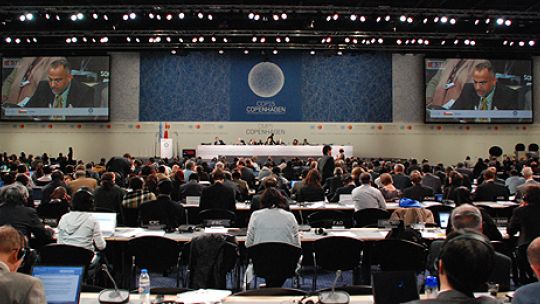
Climate change has threatened human, plant and animal populations around the world. Because it is a global issue, global leadership and global solutions are needed. The international community established a global warming target of 1.5°C in the Paris Agreement. The objective of recent international agreements has been in response to that target. However, further steps must be taken to achieve and surpass the 1.5°C. Rather than simply reduce present levels of greenhouse gas (GHG) emissions, the international community must push for net-zero commitments from all countries around the world and a redesigning of the global economy.
How do we accomplish this?
Different countries and entities have unique strategies to approach carbon emission reductions. Common strategies include:
- Carbon Pricing
“Carbon pricing is an instrument that captures the external costs of greenhouse gas (GHG) emissions—the costs of emissions that the public pays for, such as damage to crops, health care costs from heat waves and droughts, and loss of property from flooding and sea level rise—and ties them to their sources through a price, usually in the form of a price on the carbon dioxide (CO2) emitted.”
–The World Bank, Carbon Pricing Dashboard
- Carbon Offsets
“A carbon offset broadly refers to a reduction in GHG emissions – or an increase in carbon storage (e.g., through land restoration or the planting of trees) – that is used to compensate for emissions that occur elsewhere.”
–Carbon Offset Guide
- Carbon Taxes
“Under a carbon tax, the government sets a price that emitters must pay for each ton of greenhouse gas emissions they emit. Businesses and consumers will take steps, such as switching fuels or adopting new technologies, to reduce their emissions to avoid paying the tax.”
–Center for Climate and Energy Solutions
- Cap and trade
“Cap and trade reduces emissions, such as those from power plants, by setting a limit on pollution and creating a market where emitters can purchase emissions capacity.”
-Environmental Defense Fund
By aggregating such policy strategies, reductions can be maximized. There are three steps towards achieving the economic shift needed to sustainably beat climate change.
Step 1: Legal/Regulatory Strategy
To compel states to research, strategize and deploy a net-zero emissions strategy and to write it into law.
Since writing their net-zero commitments into law, the United Kingdom has secured 29% reductions in carbon emissions. Although they are behind their target, because they created laws to reach said targets, they have made more progress than other signatories of the Paris Agreement. The UK designed a net-zero strategy and then set it into law. Imagine the progress to be made if more countries could be encouraged to do the same!
Step 2: Financial/Technological Strategy
To leverage the funding committed at COP15 and finance a transition to a green global economy.
In 2009 at the Copenhagen Climate Change Conference (COP15), developed countries committed to finance a Clean Development Mechanism (CDM). By signing onto the CDM, developed countries agreed to budget for a transition to a green economy. They even agreed to designate funds to aid developing countries as they renovated their domestic markets.
Financing the transition to a green economy is necessary because until clean energy and technology is widely available, products and services derived from those sources may be more expensive than non-sustainably-sourced products. Additionally, government subsidy will be needed to stabilize companies as they adjust their trajectory to net-zero.
These finances represent the beginning of a shift to more sustainable products and materials. Moving away from economic practices that destroy the planet towards sustainable development strategies is a crucial part of slowing global warming and climate change.
Step 3: Climate Action Strategies
To bring awareness to the public about their contribution to and the status of the carbon emissions reduction effort.
In the United Kingdom, as the government moved towards a greener policies, companies also began to make projections about the financial viability of greener products. It became apparent that investment in these products would cost companies more in the short term. However, market research showed that because of awareness campaigns, the public was willing to accept these costs to purchase products that were better for the environment. This kind of commitment from the public is needed for governments around the world to make the needed investments into a greener future.
The Bottom Line
The world has an urgent decision to make: can global finances, policies and innovations be directed towards slowing climate change? Can this happen despite international challenges such as COVID-19? With the collaboration of nations, international organizations, corporations and the public, there are significant gains to be made towards reducing global warming and climate change.
